Saturday, April 1st
My friend Patrick told me to go to an old art supply store in Kyoto called Saiun-do. I almost didn’t go. It’s hard to prioritize things like this when you’re traveling with a ten year old. But there was a moment yesterday when Milo just wanted to hang out in the hotel room and I wanted to go for a walk, so I scrolled back through my DMs, found the name of the place, looked it up, and discovered that it was a few blocks from my hotel. In fact, I’d walked by it a bunch of times and only dimly registered it as an art supply store. It looks like an ancient pharmacy.
Saiun-do is a traditional art supply store that has been around for over a hundred years. Inside it is tiny and cramped. I was searching for paint and I found it, but only in the form of pigment that needs to be mixed with water and “animal glue”. In all my years of art-making I had somehow never purchased pigment. This is how it worked at Saiun-do:
I sat on a small stool and the shop clerk brought out trays of pigment. I chose my colors by placing little squares of paper on them. I based my palette on the colors I could see out the window of the shop - Kyoto colors. She weighed out my pigments and put them in baggies.
After some back and forth that required google translate, I understood that I needed to also purchase “animal glue”. She got some for me out of a case. You can see it on the right middle shelf of the upper case. I got a brush and little ceramic palette from this case too.
When I presented her with the brush, she asked me to sit again. Then she brought out a tray of bamboo-handled brushes, a piece of paper with a towel underneath, and a container of water with a ladle and single flower floating in it. She showed me how to dip a brush in the water, then paint on the paper with it to see how it feels. I used google translate to tell her I wanted a brush that would make a fine line. She brought out brush after brush for me to try, telling me what kind of animal hair each one was made with.
I was in there for a while. Eventually I found the right brush, made with horse and raccoon hair. I paid, bid the woman arigatogozaimasu, walked out of the shop, and surprised myself by bursting into tears.
Sunday April 2nd
This was the day we had planned a day trip to Osaka, Japan’s second largest city and the tenth largest city in the world. But we were too tired, so we skipped it. Instead, I spent a lot of the day painting in the hotel room while Milo made D&D characters in an app on his iPad.
We managed to get to the old Kyoto neighborhood of Gion for sushi dinner and a touristy showcase of traditional Japanese art and performance at Gion Corner. Ten minutes of it was devoted to silent flower arranging. I dug it, but I thought Milo was going to die.
Today, we took the train to Nara where we are staying in a ryokan. It is small and lovely, run by a mother and daughter. The mom is going to give me a calligraphy lesson tomorrow night.
Monday, April 3rd
I had a Japanese breakfast in my room while Milo ate croissants and yogurt from 7-11. We bought loads of cheap souvenirs, fed the famous deer of Nara Park, and saw the giant Buddha at Todai-ji Temple. Todai-ji’s Great Buddha Hall is one of the largest wooden buildings in the world and it houses the world’s largest bronze statue of buddha, or Daibutsu. Everything here is colossal. The hall houses a number of enormous sculptures, including a few carved from wood that totally took my breath away.
Nara Park is full of wonders but my favorite part of the day was spent with Naomi, the calligrapher who runs the ryokan. She gave me a lesson in her studio after dinner. I consider myself a calligrapher but I didn’t know anything about Japanese calligraphy, which, it turns out, is as much about expression, negative space, and drawing as it is about writing. She asked me to choose a word and showed me how to practice painting the kanji for it. I chose bird. (In retrospect I wish I had chosen snail.)
She also asked me to try to create some abstract calligraphy. It turns out that calligraphy in Japan does not require or imply words, only sumi ink and brushes. This was a revelation to me. Naomi told me to pay attention to negative space. She said, “Space is very important in Japan.”
Tuesday, April 4th
Today we take the train back to Tokyo via Kyoto. We’re sad to leave Nara and Ryokan Matsumae. My guide book suggested just a day trip to Nara, or maybe an overnight, so I didn’t allow for much time here. But we both wish we’d left Kyoto earlier to have another day in Nara.
Here are are a few more photos:
Ryokan breakfast.
This deer wanted Milo’s donut but we fed her the deer crackers that you can buy in the park. After you feed these deer, they bow.
Todai-ji.
The colossal Todai-ji Daibutsu.
Ryokan Matsumae again.
I love him.
Okay, that’s it for Kyoto and Nara. More from Tokyo.
xo
Carson






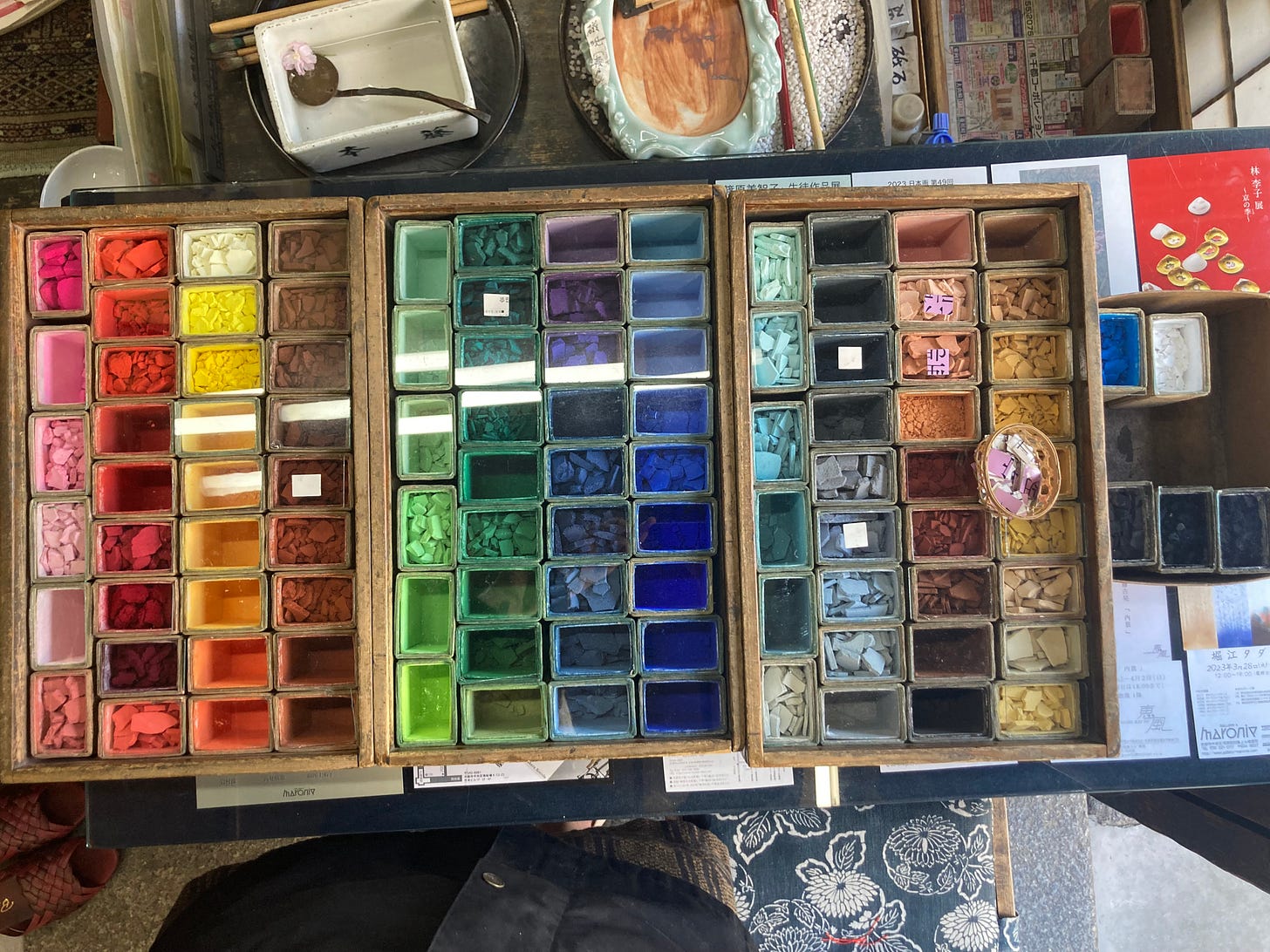
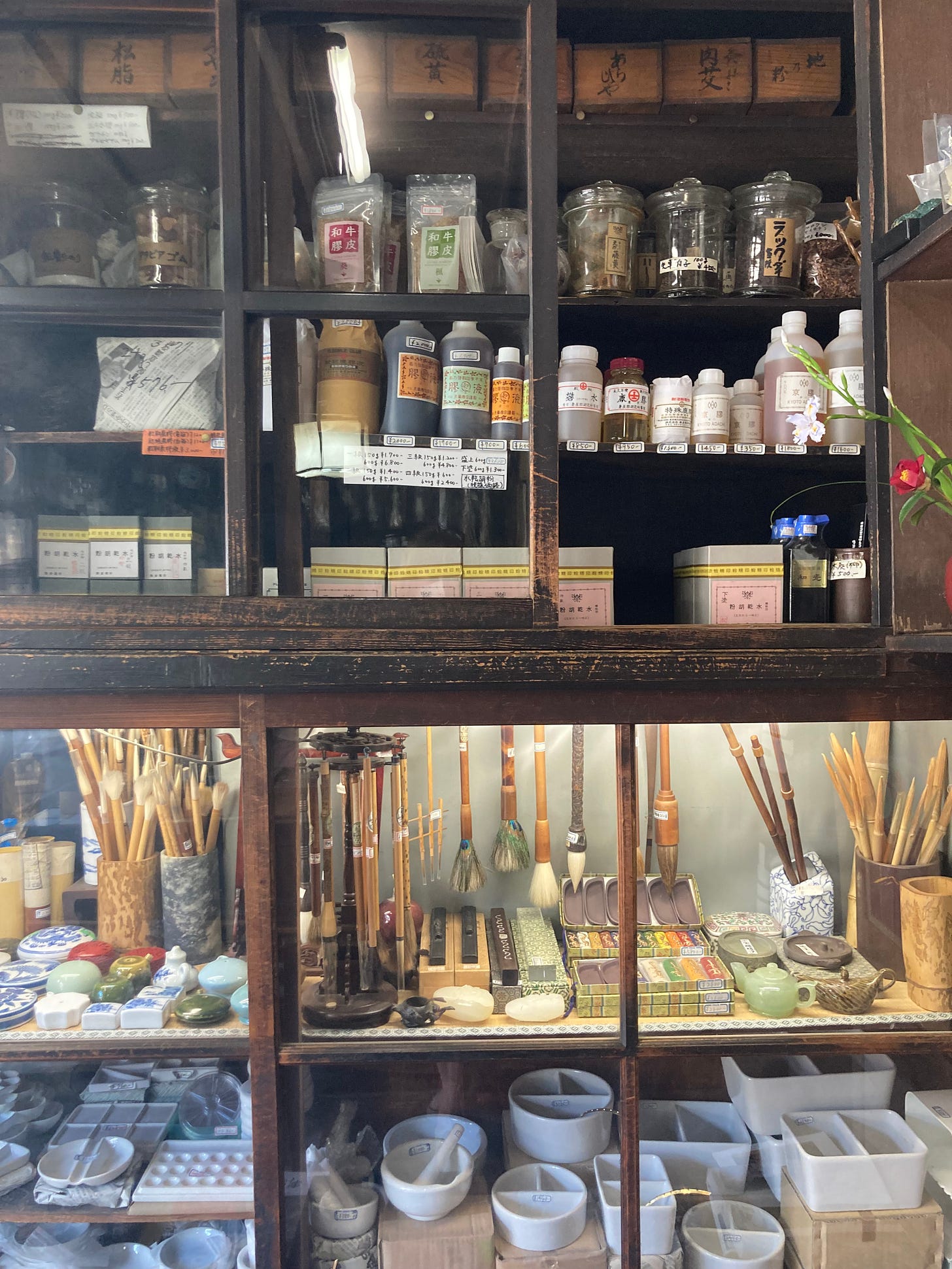
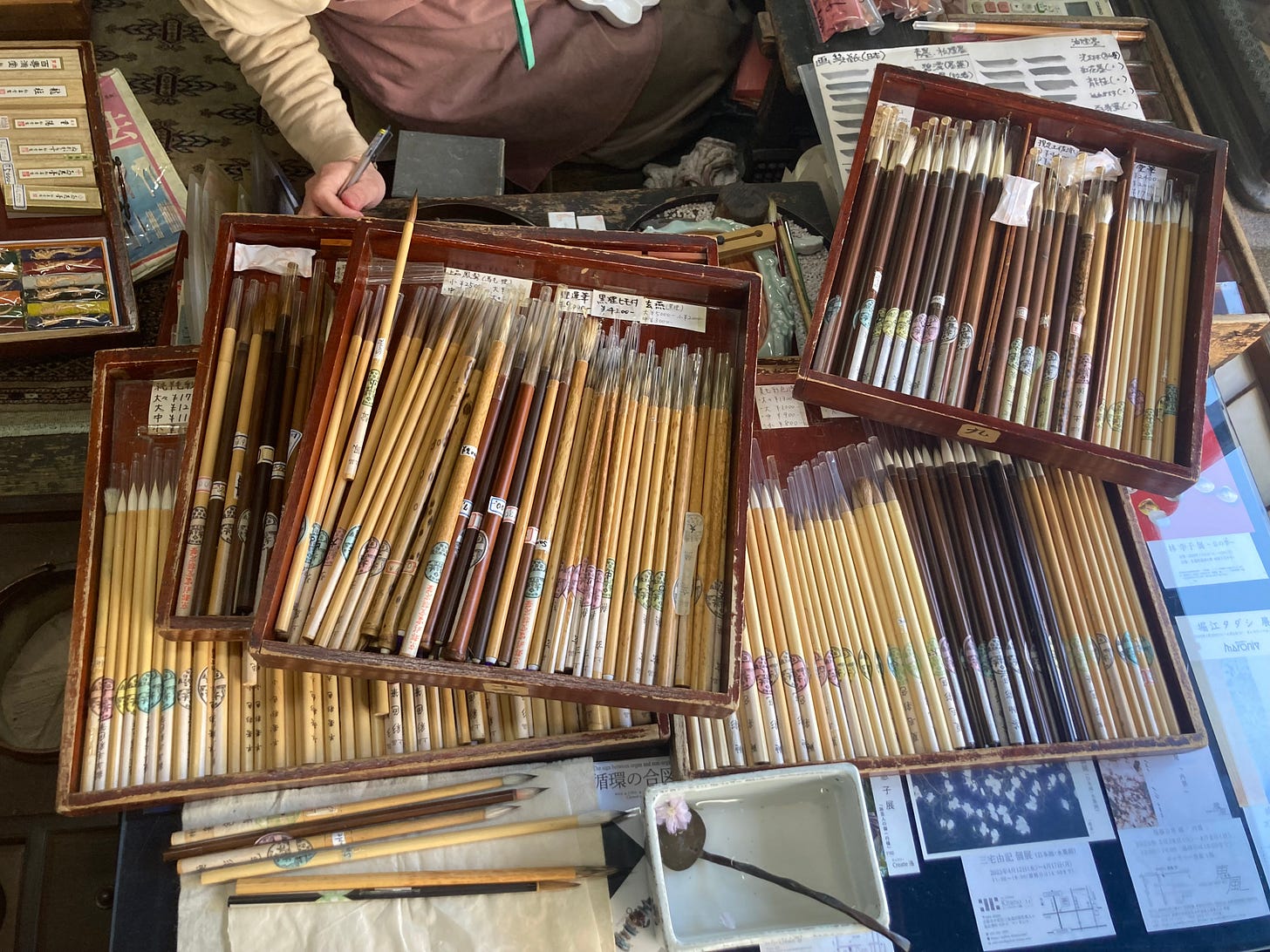


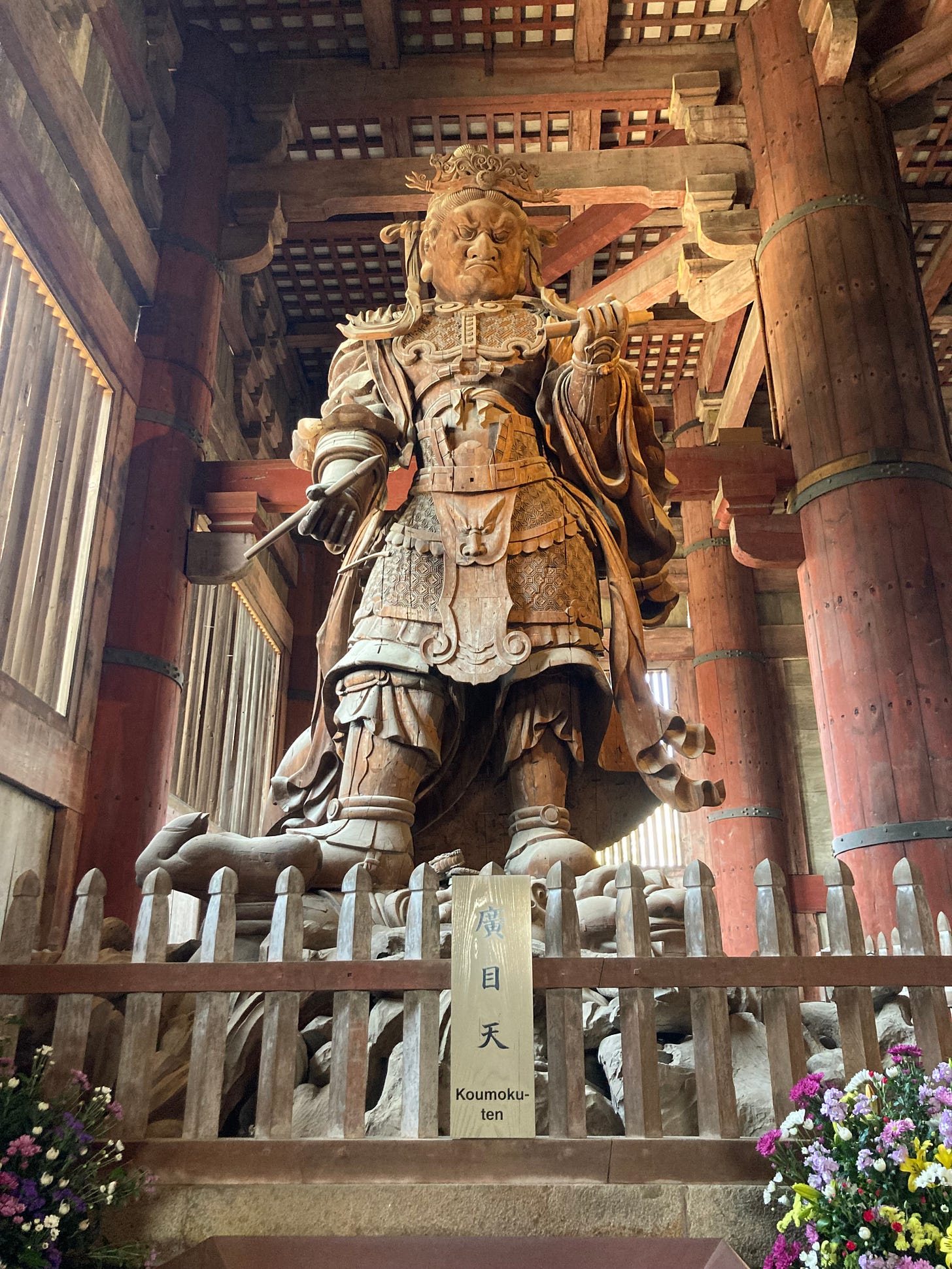
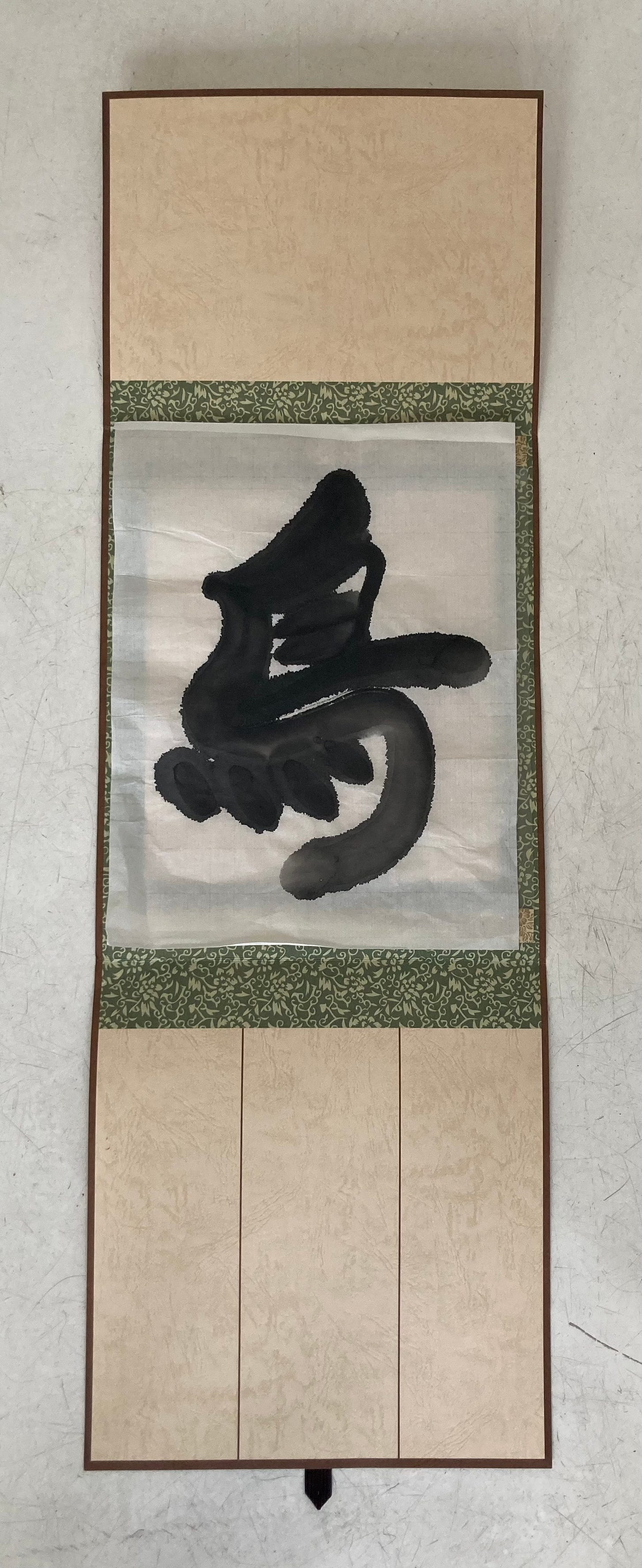

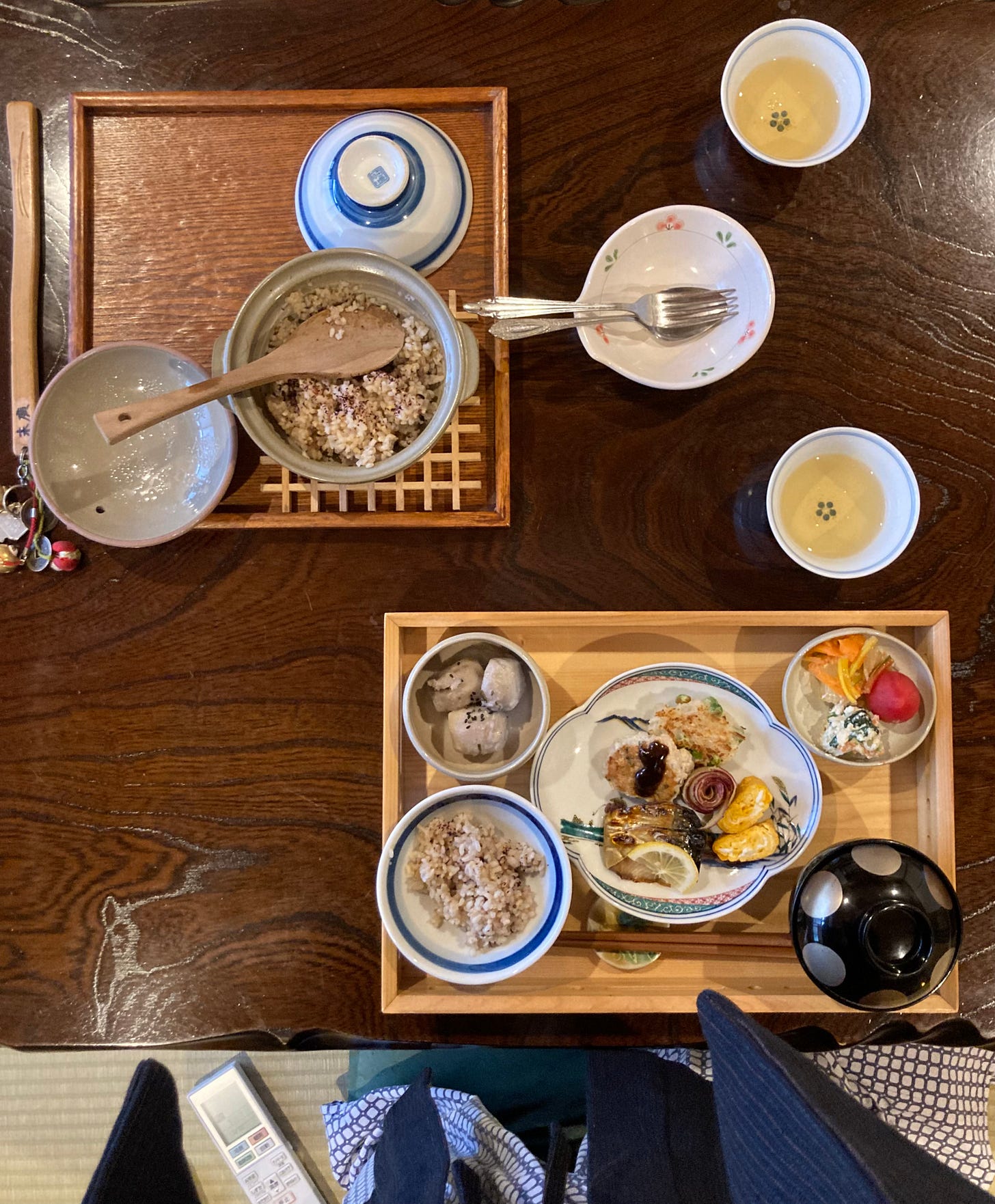
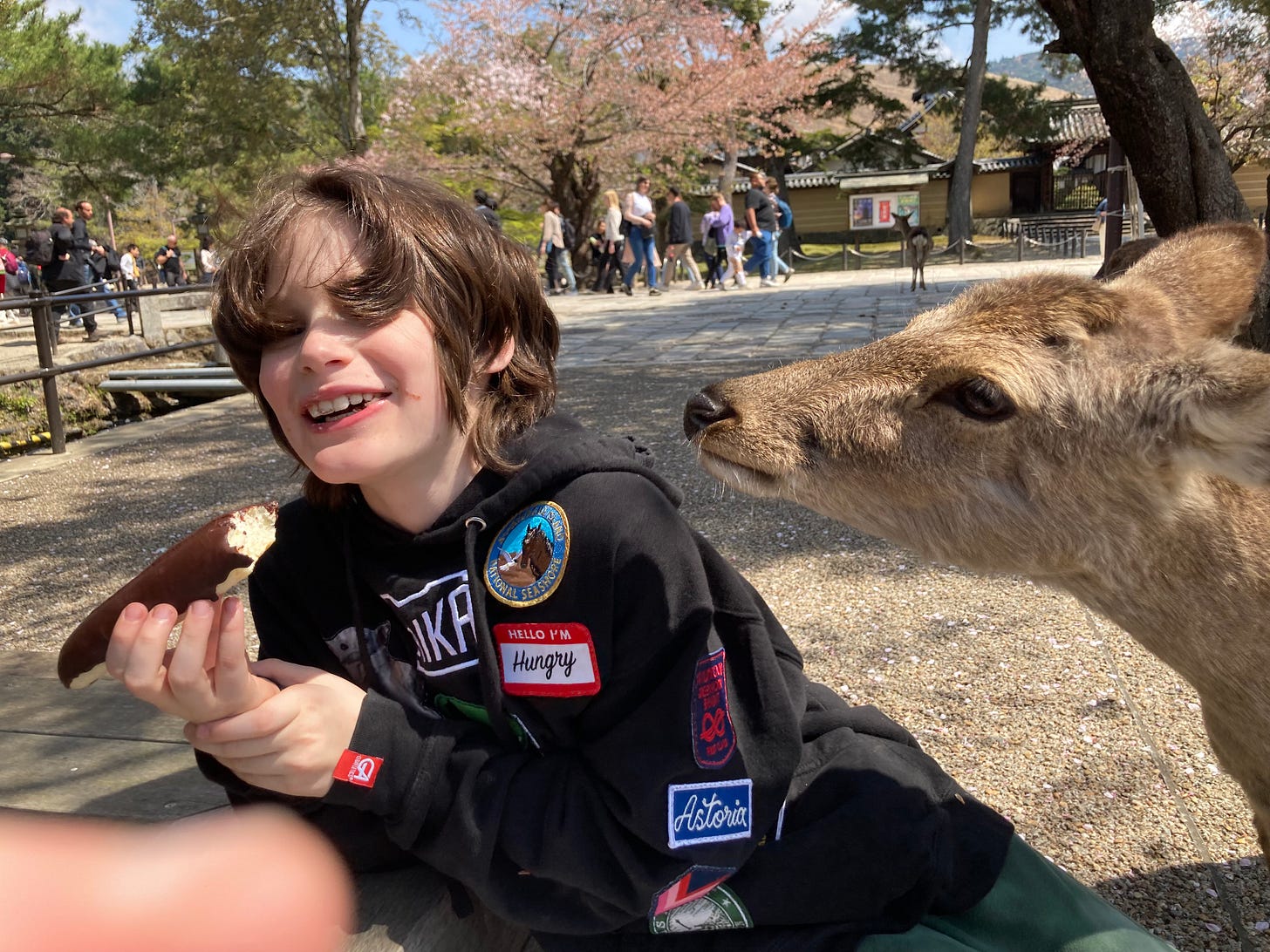
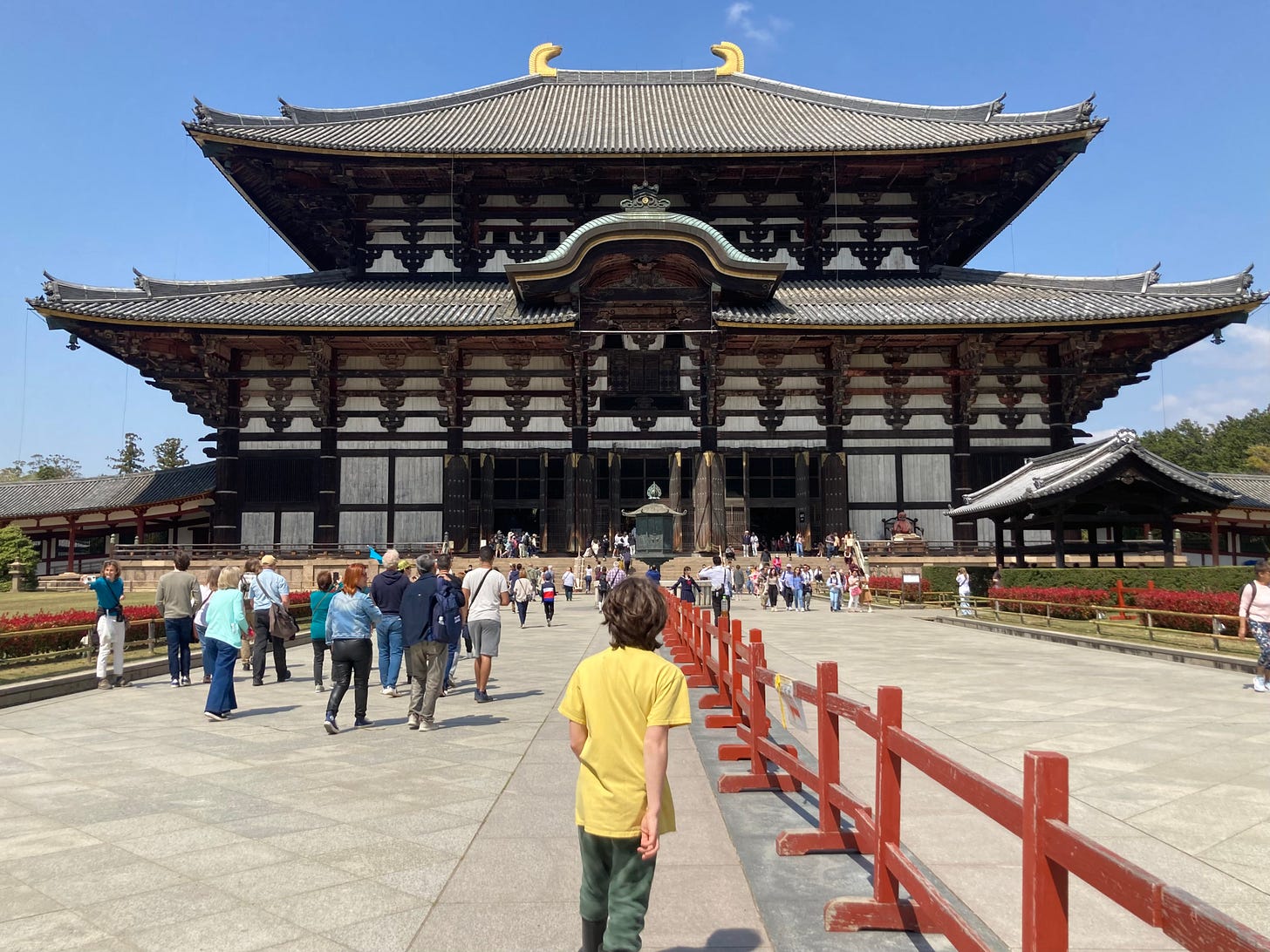

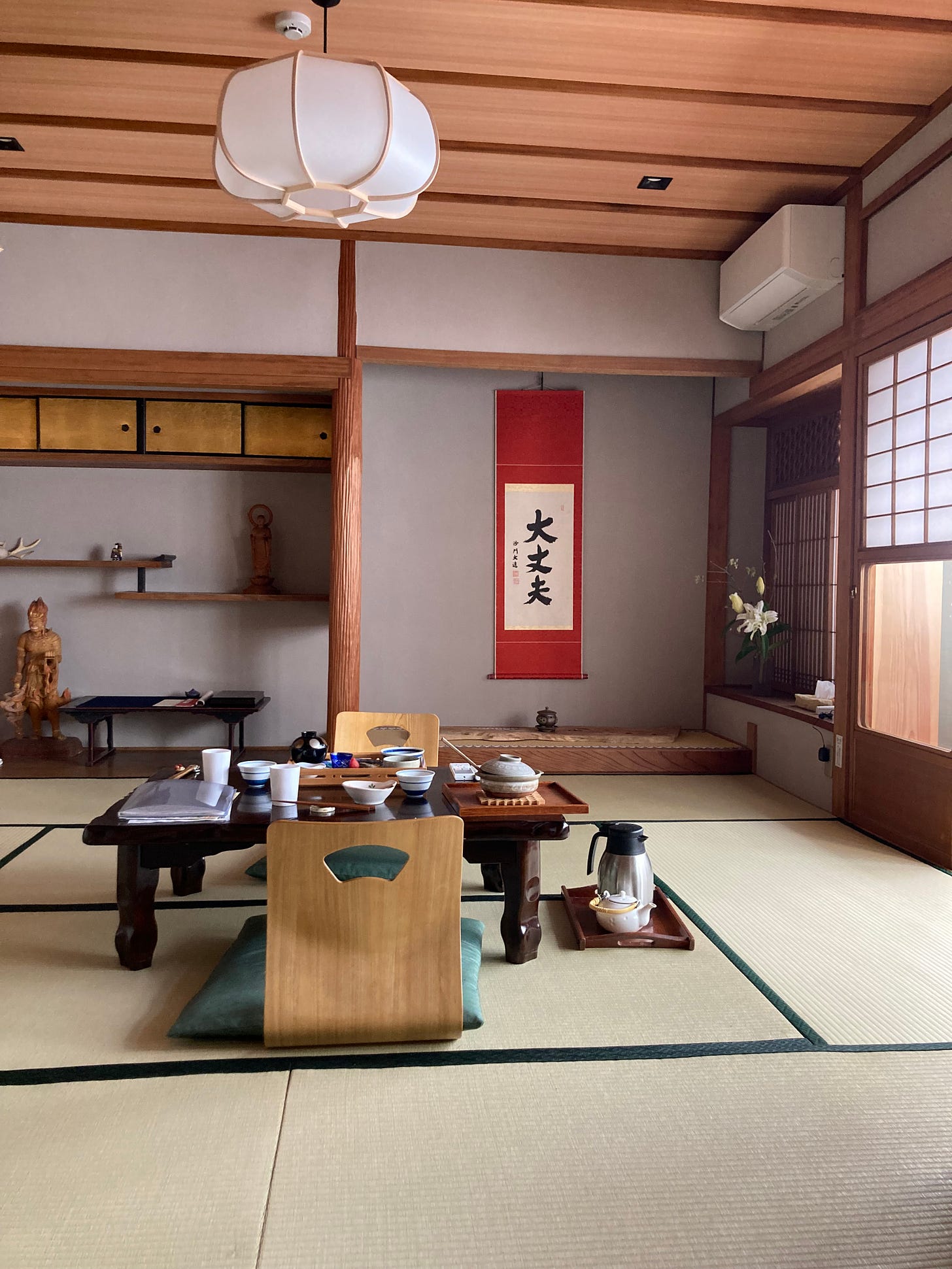
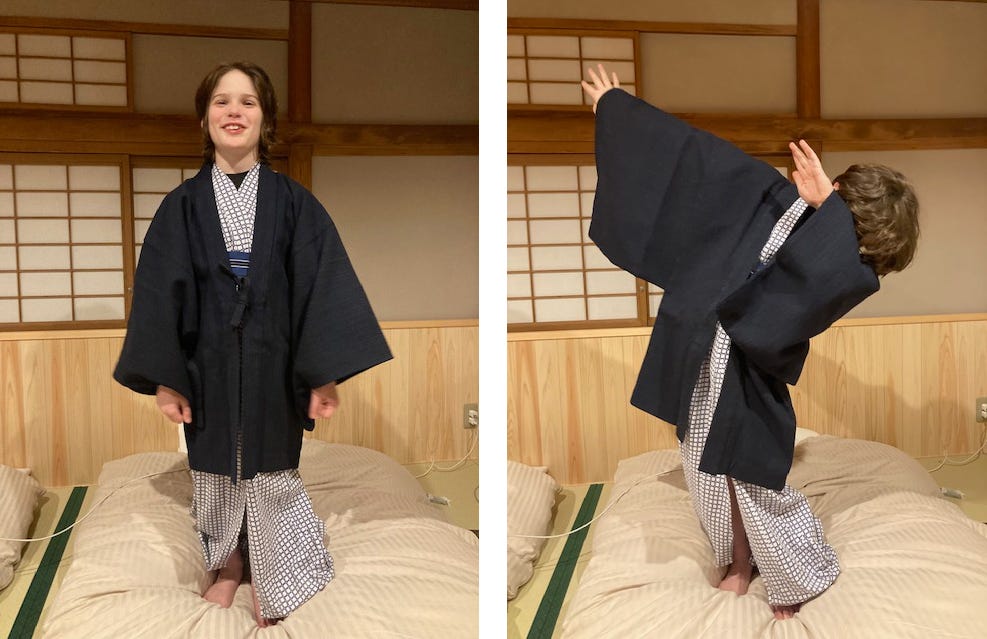

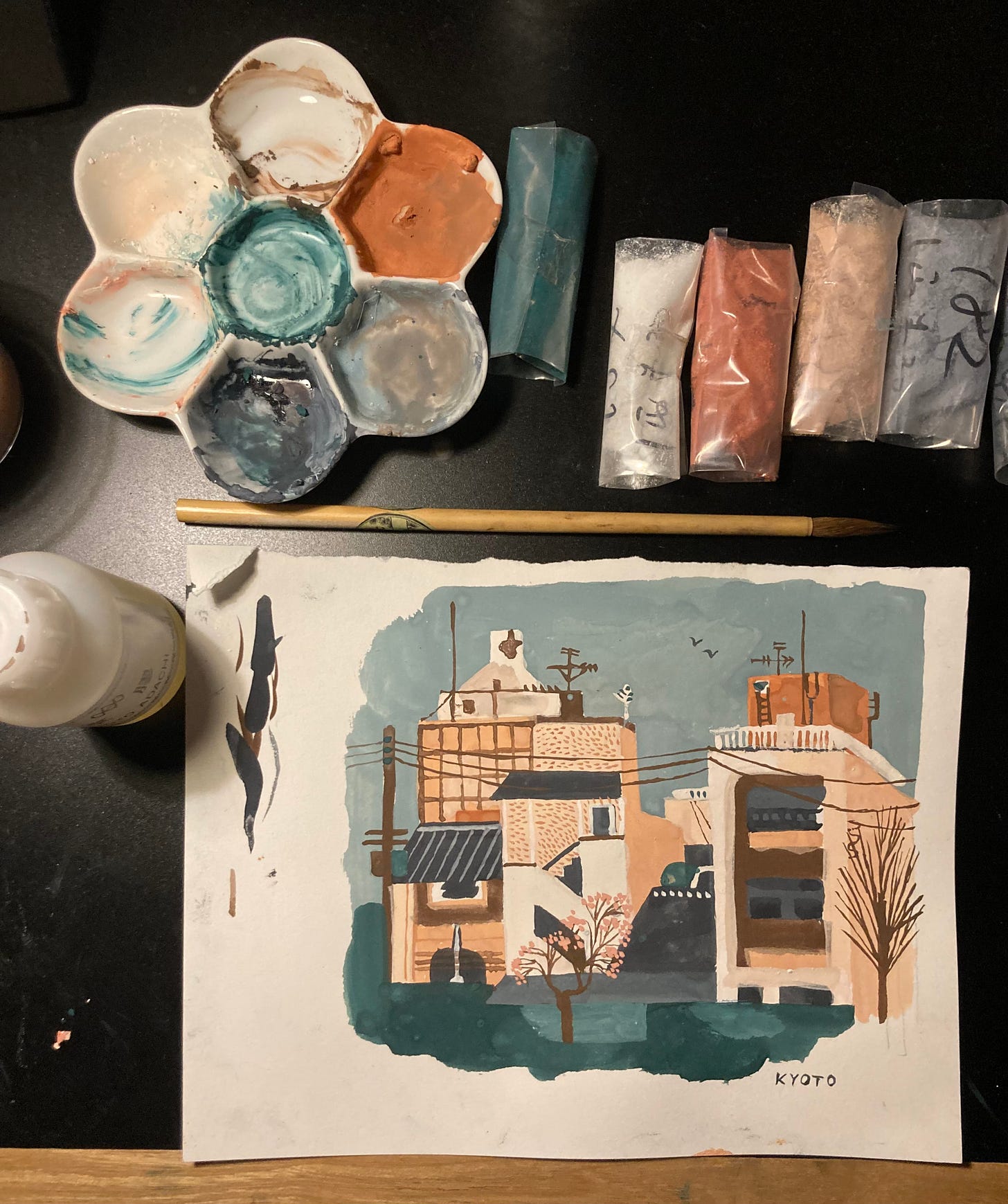
Thanks for this. This was beautifully told, and somehow restorative to read. I studied Chinese calligraphy in school and do a fair bit of abstract Fraktur calligraphy when I can. It'd be a delight to see more abstract calligraphy of yours if you enjoy it! Safe travels.
I read this post when you posted it and cannot get it out of my head and keep returning to it. Loved reading about and seeing pics from your art supply experience, and as I’m currently traveling in Portugal, I find myself asking in my mind as I walk around, what pigment colors would I choose for this scene? It’s made my own travels more meaningful. Love your beautiful painting. Made me wish I’d brought my own paints.